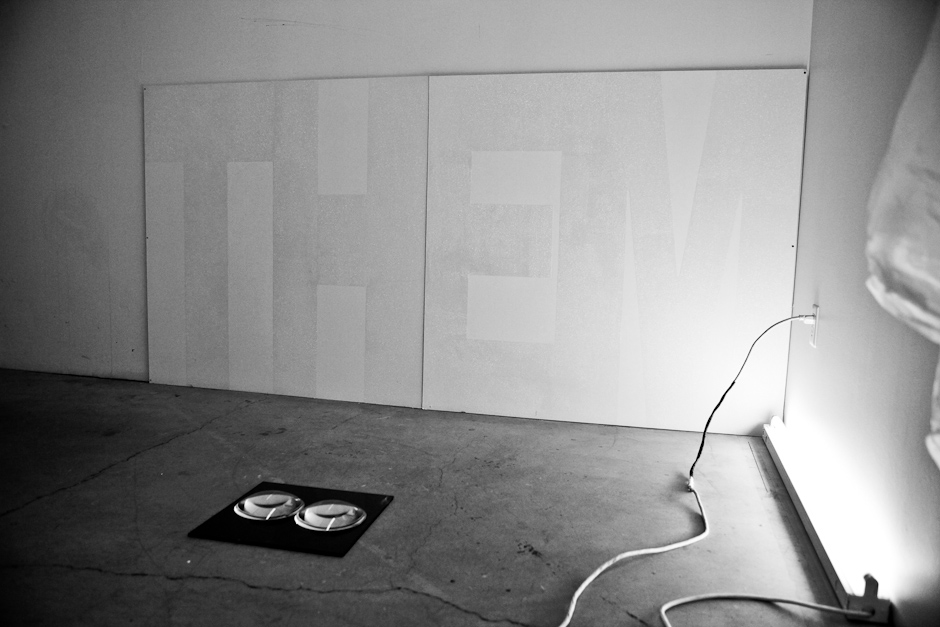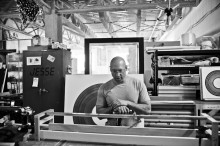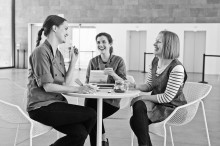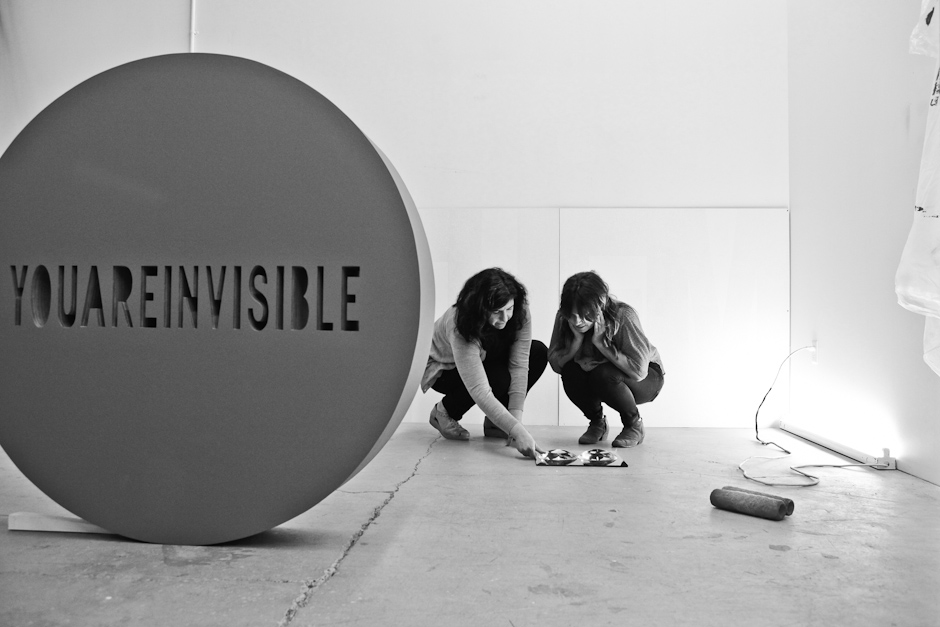
Tannaz Farsi

My gut instinct is that Tannaz doesn’t much like words, or more to the point— she doesn’t fully trust their ability to express meaning accurately. And if I’m right in my hunch, it’s only because I agree— words often let us down by immediately narrowing our sense of possibility. Expansive and nuanced understandings, experiences, and emotions become limited within the perimeters and associations of a word’s definitions and histories, and the layers become too sticky too separate out. Tannaz said in our interview that, “It took a long time for me to want to call my work sculpture because it comes with so much historical and contemporary baggage and I was interested in a much more ephemeral experience from the way I exhibited the work…” I think visual artists shy away from language in general because they are driven by a desire to tap into what exists outside of language, and to create a “space” that encourages singular, slippery, ever-changing interpretations and experiences. Tannaz later followed that statement by saying, “The ephemerality…is still important to me but I started to have a hard time with the word ‘installation’ as well!” And this made me laugh in delight— somehow Tannaz’s refusal to surrender herself to the confines of language pleases me to no end.
Interestingly, I think Tannaz has a fierce grip on language and confidently communicates dense and complex ideas. And to be honest, when we visited her at her studio in Eugene, there were moments in conversation where I got a bit lost because she seemed to keep her words on such a tight leash that I couldn’t quite find an access point, an opening wedge to break in, so to speak. But I believe Tannaz has to be careful about her words because her work is difficult to talk about— so much of it is driven by the challenge of making visible something that is seemingly invisible. Influenced by both the personal and political, her art broadly looks at diasporic identities and the process of remembering and forgetting one’s homeland. Very much informed by culture and methodological principles of interpretation, she utilizes imagery, objects, texts and various other materials to make work that is incredible deliberate and rigorous, and that is “in service of prolonging and posing alternate ways of historicizing or highlighting events.”
Besides my appreciation for how I believe Tannaz relates to language, I also admire that she brings this same kind of defiance to her art— in my mind, so much of her work is about rebuffing the established order of things to deconstruct and reconsider our collective understanding of the markers of history, culture and identity. Word by word, sign by sign, Tannaz’s practice aims to write against, into, and outside of how we understand and experience the world around us.

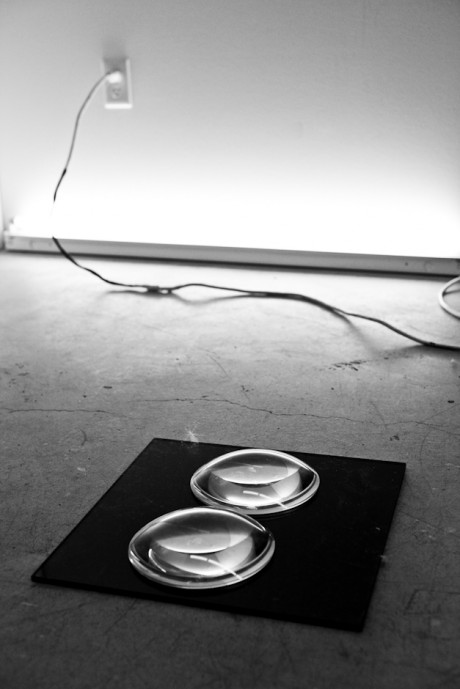
How would you describe your subject matter or the content of your work?
Broadly, my inquiry has been focused on diasporic identities marked by the complex process of remembering and forgetting one’s homeland, a sort of cultural amnesia, as well as the loss of direct physical connection to that homeland. This has manifested itself in subject matter that is concerned with memorials, meaning and context and the notion of powerlessness. I tend to make work around specific ideas that shape the way we live in the world that somehow strike me outrageous and unbelievable such as the image of the unidentified hooded man tortured in Abu Ghraib. From this point, which is intuitive and emotional, the work attempts to build or unite a set of hermeneutics gathered from image, objects and materials in service of prolonging and posing alternate ways of historicizing or highlighting events. My work is very much informed by culture, which I filter through another set of interpretations. Whether using found texts or signs or examining aspects of religion that seem inhumane—I use these dictums as a ready made and I isolate and abstract ideas through material and spatial conventions to illuminate or to infuse an alternate reading. A concrete example would be my use of the Iranian Flag or the Kaaba, in individual works as a way to understand the differences between nationhood, culture and the individual.

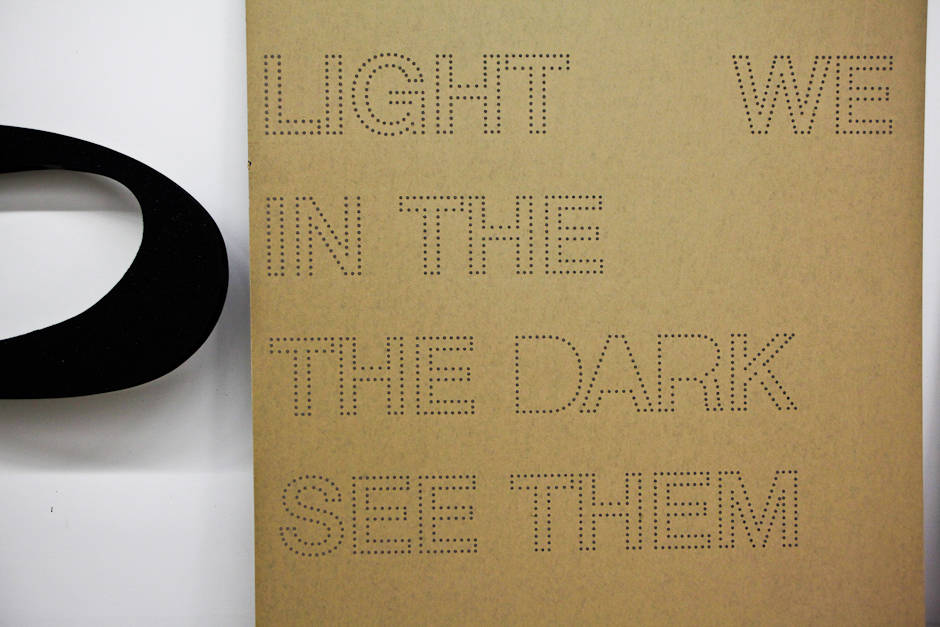
What mediums do you work with?
I gravitate towards sculpture because it encompasses multiple conventions. This expanded field, locating specificity within the larger language of art rather than in the individual concentration of medium, allows me to highlight the social dimensions of an art practice in reconsidering context, space, mastery, and authorship. That said, I relate more to materials, process and what results from this endless combination rather than a fixed notion of medium. I recently started a series of intaglio prints because I am so enamored with the kind of line I can get from this process and how this line can be perceived as a forceful gesture. It took a long time for me to want to call my work sculpture because it comes with so much historical and contemporary baggage and I was interested in a much more ephemeral experience from the way I exhibited the work to the idea of what I called my practice. The ephemerality and the triangulation of “things” is still important to me but I started to have a hard time with the word installation as well!
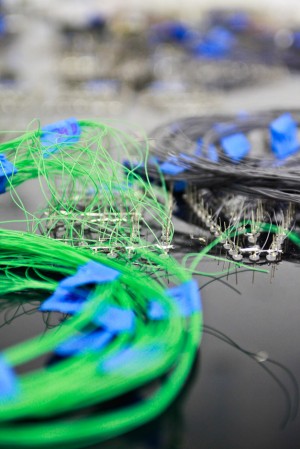
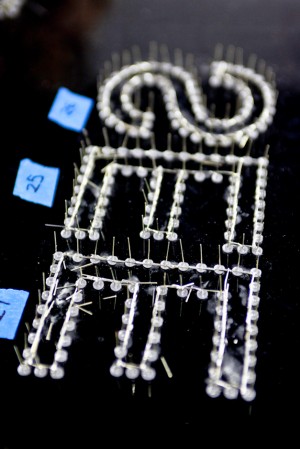
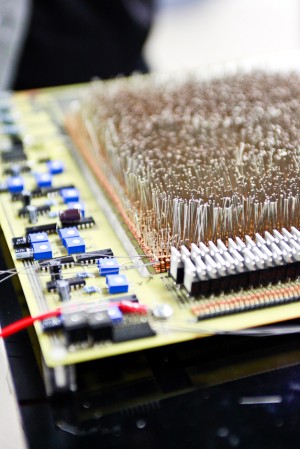
Much of your work explores themes of what is invisible/visible and what is personal/political; do you aim to challenge your viewer?
I attempt to visualize abstract ideas- giving them tangible form as a way to participate in a larger dialogue. In a way I think more about contributing to a dialogue while I am making rather than posing a challenge to the viewer. I do like the idea of anxiety and I create tension in the use of materials and the construction of space as a way to engage the attention of the viewer. What excites me about the field of art is that it comes from diverse positions and it isn’t actually supposed to do some uniform thing. I find this quality really valuable— the fact that there isn’t an answer. For me, it’s a way to speculate and to create discourse on multiple layers. Of course politics or political events motivate my art making, but those politics are simply inextricable from my personal experience and my value systems.
Would you say your work reveals your personal story?
The umbrella ideas that I keep returning to in the work start from a personal place in that the way I think is informed by my experience. The work becomes a reflection of how I see, the way I think and what I am passionate about- it’s not really diaristic. I also think abstraction is culturally suited to my way of thinking. In Iranian culture the idea of veiling manifests itself in multiple ways not just on the body of a woman but the division of public and private life or the idea of digging for meaning in a text. I find this slipperiness in meaning or thinking about embedded meaning that is discovered through time as a form of abstraction and it has been an integral aspect of my work.

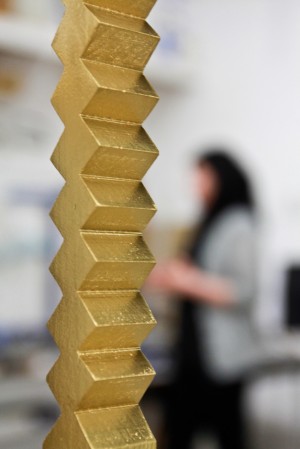


What are you presently inspired by— are there particular things you are reading, listening to or looking at to fuel your work?
I have a Lawrence Weiner postcard on my door and it reads – this piece need not be built – I have been trying to do that for a while now without success but I look at it all the time! This is important because a lot of my work starts with a simple gesture and then it builds into something much more substantial. Sometimes I wish it was enough to hold it at the simple gesture rather than to figure out how to “build” something. Gravity is a part of dimensional work that I struggle with.
I have a few things that I am working through in researching projects that are in the ideation stage. Over the past few years I have been fascinated with the Kaaba as a sort of homing devise with a magnetic pull on the surface of the earth for millions of people. I found a book titled World Maps for finding the direction and distance to Mecca- there are two brass maps that date to 17th century Iran and there are so many incredible illustrations of these instruments and the math necessary to find one’s way. I am trying to figure out how to use the methodology for finding something else that could articulate the complexities posed by this piece of architecture. I have also been looking at a book about the historical production of gold coins for an upcoming project. But, I have to say, I am transfixed this summer of 2014, with the terrible news that comes through every news source that I frequent and although inspire is not the correct word here, it takes up a lot of head space and makes me physically sick.
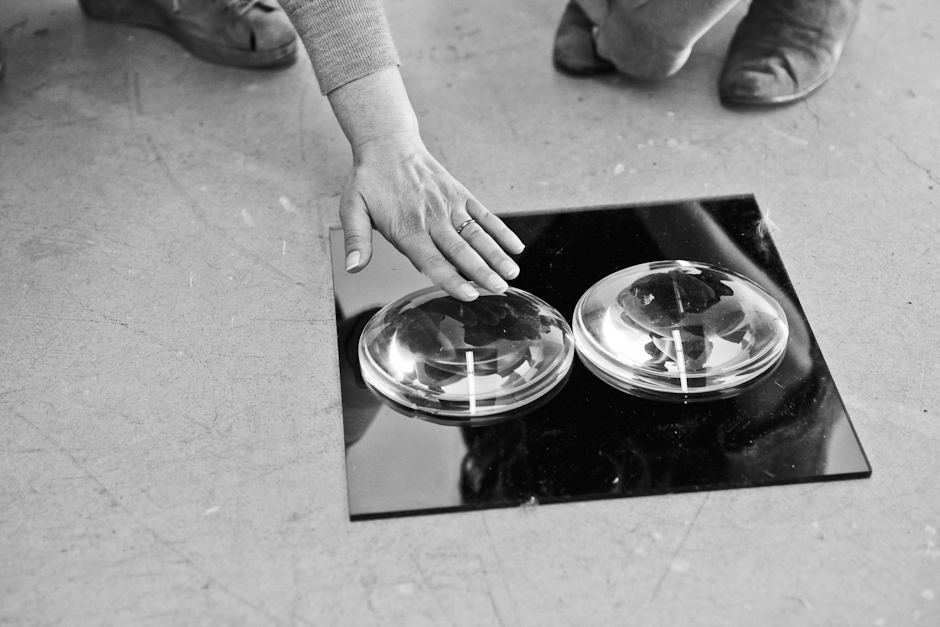
Besides your art practice, are you involved in any other kind of work?
I am starting my 8th year teaching at the University of Oregon. I have great colleagues that are engaged artists as well as great teachers. We also have inquisitive students that care deeply about their practice and are committed to the development of their work. I find it incredibly challenging and rewarding to be able to think in depth about pedagogy- what does it mean to make art today? What are the challenges in cultivating and maintaining a practice? It is rewarding simply because the questions change all the time. It feels like you are part of a moving and evolving system that reflects the conditions of the operating culture. It is a different thing everyday, every term and every year – this excites and motivates me.
What does having a physical space to make art in mean for your process, and how do you make your space work for you?
Depending on what I am working on, the studio is a place to arrange things, to think through materials, to sit and stare, to procrastinate, to read, and to create generative gestures towards ideas that I may work on later. I think through this type of seeing in my environment. The constant struggle is how and where to store things in a 400sf space. Objects take up space and sometimes it is hard to get rid of things but I may be near a cleansing to bid farewell to the last decade. I have been fortunate to work in temporary studio spaces at residencies- a big blank white space with windows is such a treat! I also use the shops at the University of Oregon for fabrication due to the limitation of space and proper ventilation in my studio. I like to keep shop space separate from my studio space.
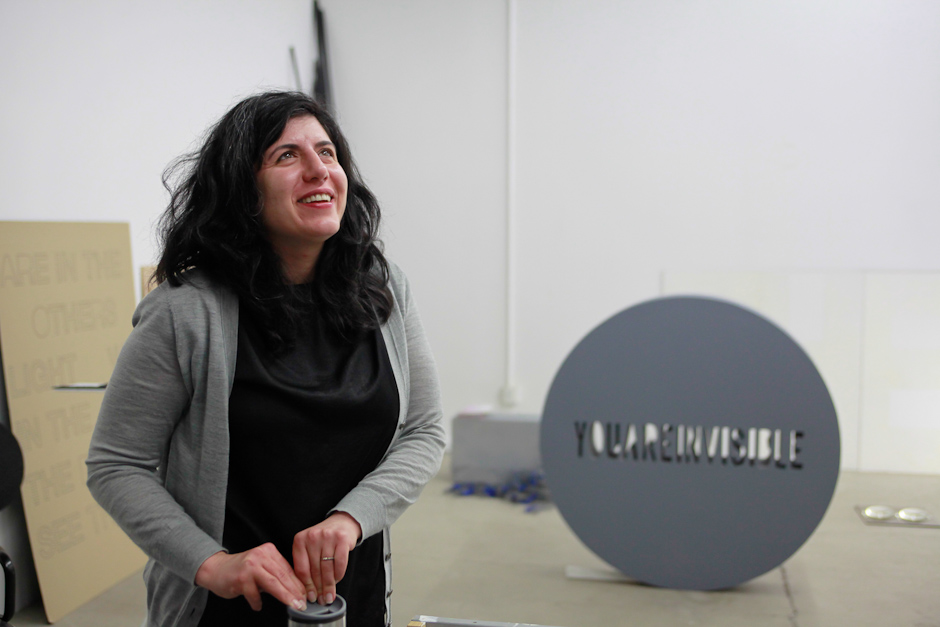
Is there something you are currently working on, or are excited about starting that you can tell us about?
I am working on a few projects simultaneously. This summer I received a Ford Family Fellowship and it has been instrumental in getting a project underway that was stalled out. It is a portion of text from Bertolt Brecht’s Mack the Knife /Three Penny Opera. The text is comprised of 8000 led lights programmed to randomly brighten and intensify the points of each letter. I am trying to mimic a chasing ant line that acts as a selection tool and I especially like the combination of this form of selection in relationship to the text. I mentioned earlier that I have been feeling really sick every time I read a news article and part of that has to do with Gaza. I wanted to somehow give the death toll a visual mass and I am working on “portraits” that are hand scraped black ink on individual pieces of paper and will be accompanied by a photograph of a flower arrangements for each individual. The numbers have escalated – it is growing and I am not sure about the final rendition but it feels like something I should be doing for a part of each studio day. There are a few other works in process- It has been a productive summer.
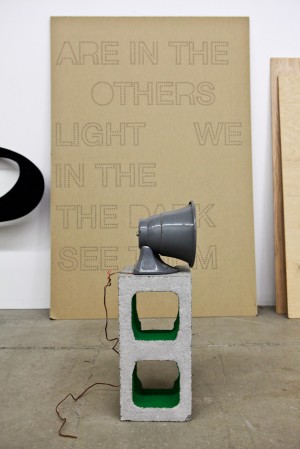
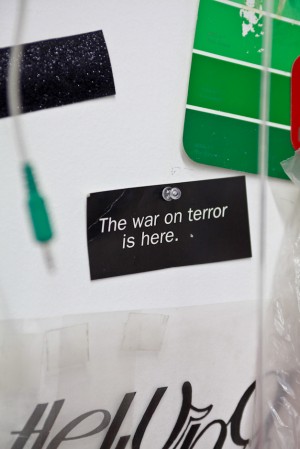

Do you see your work as relating to any current movement or direction in visual art or culture? Which other artists might your work be in conversation with?
I came to art through a clay studio practice that was not part of a university. I learned how to make pots and thought about the social and political aspects of craft communities, but I didn’t have any understanding of contemporary art. I remember the first time I saw Shirin Neshat’s series, Women of Allah, in the mid 90’s and it was like lightning! I could make work about my experience as a displaced immigrant or make sense of this otherness that I had always felt and that was empowering! I admire the work of so many artists including Mona Hatoum, Phil Collins, Michelangelo Pistoletto, Rosemarie Trockel and Emily Jacir to name a few.
How do you navigate the art world?
I make work. I hang out with other artists, I travel and see exhibitions, I try to contribute to my community of arts and artists in anyway that I can.
To see more of Tannaz’s work:
www.tannazfarsi.com
http://art.uoregon.edu/faculty/tannaz-farsi
